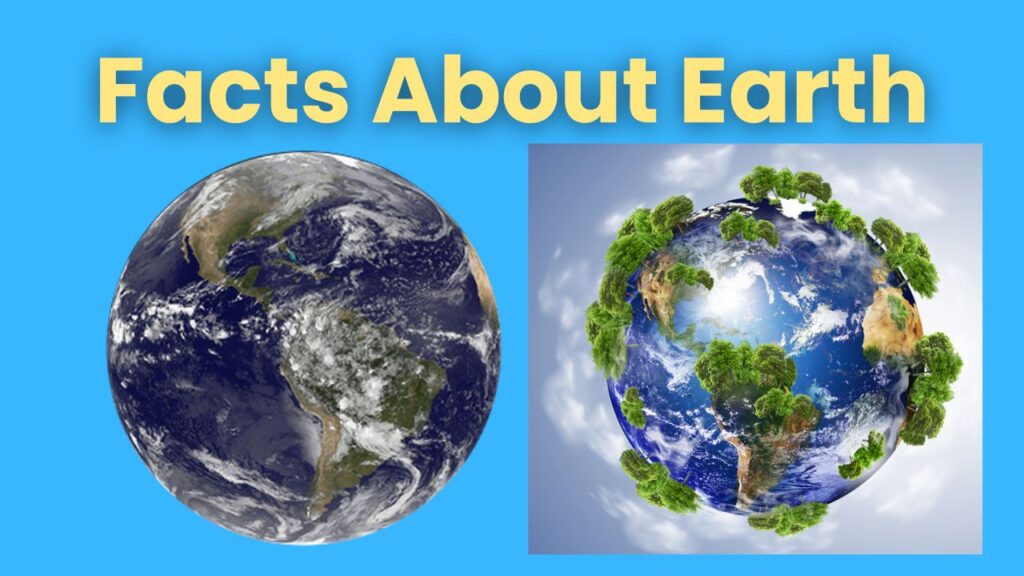Facts About Earth : Nestled as the fifth largest celestial body in our solar system, Earth stands out as a unique oasis with a distinguishing feature – liquid water embracing its surface. Outranking the nearby Venus in size, Earth leads the pack among the four planets closest to the Sun, boasting a composition of rock and metal.
Unveiling a linguistic history unlike its planetary counterparts, Earth’s name diverges from Greek or Roman mythology, finding its roots in Old English and Germanic languages, a simple translation denoting “the ground.” Across the myriad of languages spoken on our home planet, Earth goes by many names, a testament to the rich diversity thriving on this third rock from the Sun.
Facts About Earth

Legacy in Names Dating back a millennium, the name Earth carries a legacy untouched by mythological ties. Unlike its planetary siblings, which pay homage to Greek and Roman deities, Earth proudly stands as a Germanic creation, meaning “the ground.”
A Haven for Life
Earth’s inviting climate and a harmonious blend of chemicals have fostered a flourishing ecosystem. Its distinguishing feature lies in the abundance of liquid water, a rare attribute that has nurtured life for approximately 3.8 billion years. Yet, the impacts of climate change pose a threat to the very features that make Earth a haven for life.
Magnitude and Proximity
Dominating with an equatorial diameter spanning 7,926 miles (12,760 kilometers), Earth takes center stage as the largest terrestrial planet and the fifth largest in our solar system. Positioned precisely one astronomical unit away from the Sun, the universal yardstick for comparing planetary distances, Earth receives the Sun’s light in a mere eight minutes.
Orbit and Spin
In its cosmic dance around the Sun, Earth executes a full rotation every 23.9 hours, completing an annual orbit in 365.25 days. This extra quarter-day anomaly prompts our calendar’s leap year adjustment, maintaining synchrony with our celestial journey.
Lunar Singular Splendor
A solitary moon graces Earth’s celestial company, casting its brilliance across our night sky. This lunar companion, a stabilizing force, tempers our planet’s wobble, contributing to the stability of Earth’s climate over millennia.
Beyond the Rings
Unlike some planetary neighbors, Earth bears no rings, maintaining a simple elegance in its cosmic form.
Genesis and Formation
Born from the cosmic ballet that defined our solar system 4.5 billion years ago, Earth emerged as gravity sculpted swirling gas and dust into the third orbital position from the Sun. This terrestrial realm encompasses a central core, rocky mantle, and solid crust akin to its planetary kin.
Layers of Complexity
Earth’s layered structure, from the inner core to the crust, unfolds a geological narrative. The inner core, a molten sphere of iron and nickel, radiates intense heat, surrounded by the fluid outer core, viscous mantle, and outermost crust.
A Dynamic Surface
Boasting volcanoes, mountains, and valleys akin to Mars and Venus, Earth’s lithosphere comprises moving tectonic plates. Our global ocean, covering nearly 70% of the surface, conceals vast underwater mountains and volcanic wonders, unveiling a breathtaking underwater realm.
Gaseous Blanket
Cloaked in an atmosphere comprising 78% nitrogen, 21% oxygen, and a trace of other gases, Earth’s life-sustaining air shields us from the Sun’s radiation, influencing both long-term climate and short-term weather patterns.
Magnetic Mystique
A rapid spin and a molten core gift Earth with a magnetic field, deflecting the solar wind into a teardrop shape. This magnetic prowess, coupled with the occasional flip in polarity, influences everything from compass needles to mesmerizing aurorae.
8 Fascinating Facts
About Our Celestial Abode:
- Scale Perspective – If the Sun were a front door’s height, Earth would be the size of a nickel.
- Terra Firma – Earth, adorned with mountains, canyons, and plains, is predominantly cloaked in water.
- Breath of Life – A balanced atmosphere of 78% nitrogen, 21% oxygen, and 1% other elements sustains life.
- Lunar Partner – Earth is accompanied by a solitary moon.
- Ringless Elegance – No rings embellish Earth’s cosmic silhouette.
- Orbital Insight – Satellites observe Earth as a holistic system, monitoring the atmosphere, ocean, glaciers, and solid earth.
- Ideal Habitat – Earth, with its hospitable conditions, stands as the perfect cradle for life.
- Guardian Atmosphere – Our atmospheric shield intercepts incoming meteoroids, safeguarding against potential impacts.
